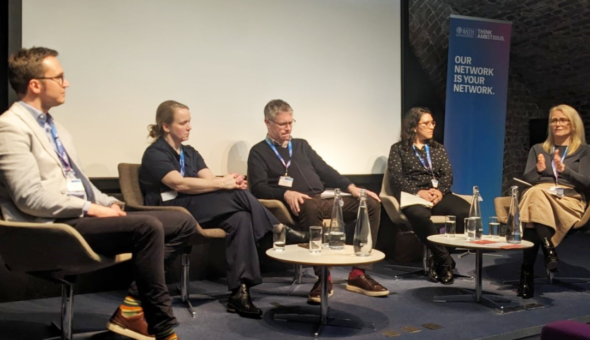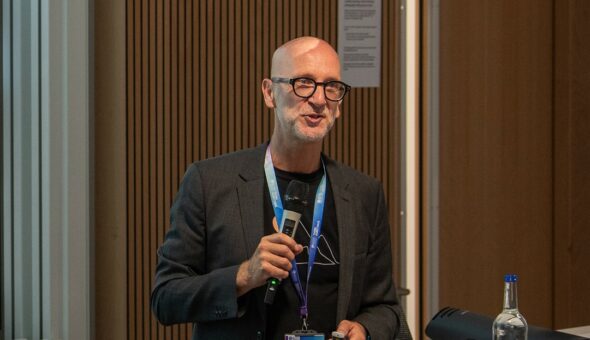Throughout October, we’ll be hosting a Crossing Boundaries takeover, exploring issues around modern slavery to mark Anti-Slavery Day on the 18th.
In this post, keynote speaker Genevieve LeBaron, Professor of Public Policy at Simon Fraser University, explains why we need to stop thinking of modern slavery as a hard-to-uncover issue.
I often hear policy leaders, business representatives and even academic researchers describe forced labour as a ‘hidden crime’. The story generally goes that because forced labour is illegal, it is almost impossible to find or to predict where it might occur within the economy.
For instance, the United Nations Office on Drugs and Crime capture this sentiment in their Global Report on Trafficking in Persons 2020, where they write, “Although found in every country and every region, trafficking in persons remains a hidden crime, with perpetrators operating in the dark corners of the internet and the underbelly of the global economy to entrap victims for sexual exploitation, forced labour, domestic servitude and other forms of exploitation.”
After researching forced labour for over 15 years, I find depictions of it as such to be both puzzling and misleading. I have studied the patterns of forced labour across several sectors and parts of the world, including in India’s tea industry, Ghana’s cocoa industry, and garment production in India, Ethiopia, Honduras and Myanmar. With colleagues at Simon Fraser, Stanford and Yale universities, I co-run Re:Structure Lab, which has recently reviewed the interdisciplinary academic literature on the business of forced labour and synthesised this into six evidence briefs.
Reflecting on this body of work, I’m struck by how easy forced labour is to find.
Recognising patterns
One key reason for this is that forced labour is surrounded by entirely predictable business model and supply chain patterns. As I’ve written about in a recent Journal of Supply Chain Management article, there are clear supply chain patterns surrounding forced labour.
One way to think about this is in supply and demand terms. Where the businesses at the top of supply chains are using irresponsible sourcing practices – such as sourcing goods below the actual cost of production – and where value is unevenly distributed with high concentrations of profits at the top, it is likely that further down the supply chain there will be a persistent business demand for forced labour.
Where there are vulnerable workforces – for instance, because workers have limited labour protections, restrictive immigration regimes, poverty or discrimination on the basis of social identity – it is likely that there will be a supply of people persistently vulnerable to forced labour.
Where the supply of vulnerable people and business demand for exploitation come together, we almost always find forced labour. To know where to look for it, we just need some basic information about a business and its supply chains – much of which is readily available through secondary data like industry databases, company reporting and journalism.
Time and pressure
After decades of research, we know very well which types of products and services forced labour is most closely associated with. For instance, we know that forced labour thrives in labour-intensive, low-skilled production activities, such as raw material extraction and agriculture, as well as industries with immense time and cost pressure, including electronics and garments.
We also know which workforces (Indigenous peoples, migrants, women, LGBTQ+ individuals, low-caste and racialised workers) and kinds of jobs (temporary, day labour, informal, workers provided through intermediaries) are most vulnerable to forced labour. We know which countries have the biggest risks of forced labour; indeed, the United States Department of Labor’s Sweat & Toil app or annual list of goods produced by child or forced labour give us an updated account of this every single year.
The dynamics at play are no longer a mystery, though there is considerable research left to be done to understand its precise manifestations in under-researched supply chains. For instance, what about those producing for domestic consumption rather than export, or illegal products such as drugs?
We have the information we need to find forced labour. Everywhere that I’ve used that information to look for forced labour, I have found it. Usually widespread, occurring in broad daylight, very closely connected to legitimate businesses and on sites visited by social auditors, whose products are adorned with ethical certification labels.
It’s baffling that people continue to refer to forced labour as a hidden crime. Maybe they do so because it gives policymakers and industry an excuse for having taken so few effective measures to combat forced labour. If it is hidden, we cannot expect them to address it: if it is not, then there is very little excuse for allowing companies to continue to hardwire forced labour into their business models.
The reality is, if we stopped referring to forced labour as hidden, we could enact much more effective solutions that take into account the substantial research scholars, policy agencies, journalists and international organisations have done to reveal the nature of this issue in the economy today and the ease with which it can be found.
Respond



